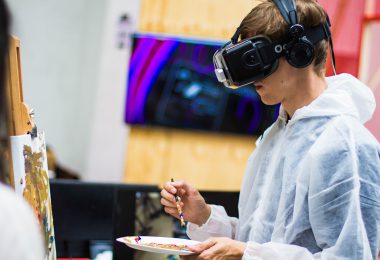There is something else due to the rise in the usage of social media and smartphones. Compared to earlier generations, these days we are all reading fewer books. Some individuals are concerned about the implications for literature and, above all, for our brains. However, is it correct to claim that we read less?
It is true that reading has been an essential part of human experience for thousands of years, but it is not long on the evolutionary time scale. It made sense to read lengthy texts linearly before the internet; now as people become more accustomed to their computers or phones to scan brief messages, this is changing. However, it is uncertain what this means for the future of book publishing.
Change in reader expectations
Due to the availability of online information, the expectations of readers change. Libraries already sense the need to adapt to an environment that is increasingly digitally oriented, even though print books are not phasing out any time soon. According to poll findings, digital services such as pre-loaded ebooks or training on e-readers are ready to be used. The overwhelming majority of libraries now have online catalogs, allowing consumers to borrow e-books held by libraries and even the smallest library strives to provide the public more automated and online services.
As we go towards a digital age of information distribution, libraries and other cultural institutions will remain committed to updating technological advances. If libraries keep refusing to provide their services, online services such as eBook borrowing, free database access, and digital books may be disregarded and forgotten. Modern readers’ expectations are changing because of technological advancements, and society and its libraries must adapt as rapidly as feasible.
Interactive textbooks
Textbooks are no longer just a flat text collection on a page with some useful pictures. They have developed into a lot more. As a consequence of technological development, textbooks have seen a shift. The usage of web-based material has made them more interactive. Students may take examinations with immediate feedback while reading a textbook, see animations that help them grasp the topic, access additional resources, watch films, and use other learning material, all while reading a textbook. The students may utilize E-Readers to communicate with this material and they can also carry eight textbooks simultaneously without suffering from pain.
Are we less reading?
The proportion of Americans reading literature for leisure has declined by about 14 percentage points since the beginning of the 1980s. However, this does not always imply that we read less than we did before. Many individuals still need to read to succeed in school or in their careers. Then you will find on the internet the words, phrases, and communications, including emails, SMS, and tweets to mention a few examples. Some people think this implies that we read more individual words than we did in the past. It’s only that this time it’s done in a different manner.
Hypertexts, on the other hand, appear to be an enormous obstacle when trying to read a lengthier, more coherent work. Those who read linear material understand, retain and learn more than those who read linked information through continuing study. One of the study examples is a short story to be read by 35 adults in the traditional linear text format, with a further 35 adults read in a version that includes hypertexts, similar to that seen on a website as another example. However, even though hypertext users took longer to read the material, it was difficult to understand three out of four, compared to just one out of ten people who received linear text.
Besides utilizing hypertexts, there is another reader on a computer which makes it hard to follow where you’re reading. As the screen may scroll, change the size of the text, modify the number of columns it displays, etc, it is difficult to accurately display the information. You could not simply remark to yourself, “It was towards the conclusion of the book at the bottom left of the page,” because the data may not be in the same visual location when you visit the book later again. Moreover, because lengthy parts are not split into pages, it is considerably harder for readers to follow where they are in the text. The meaning of this is that, according to researchers, “a strong mental image of the physical structure of the text leads to a better understanding of reading”. The issue is exacerbated by the smartphone’s small screen. Some individuals think it’s better to move a point on the screen than to flip pages of a book or paper.







[…] Is technology changing the way we read? […]
[…] Is technology changing the way we read? […]
[…] Is technology changing the way we read? […]
[…] Is technology changing the way we read? […]
[…] Is technology changing the way we read? […]